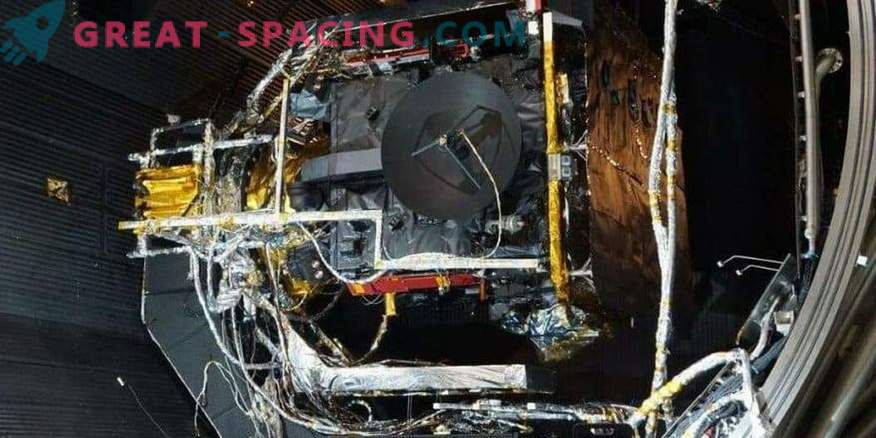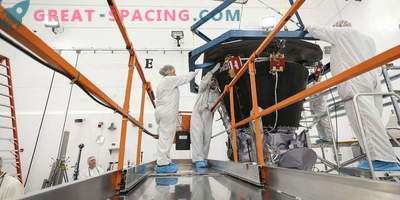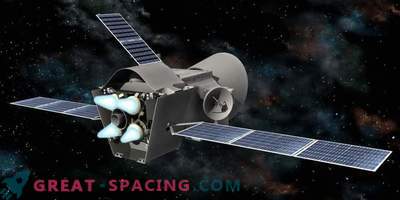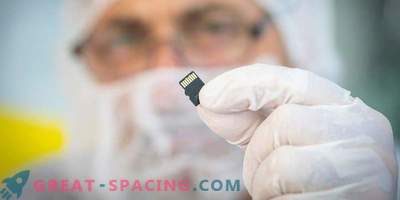
The photo shows a side view of the ESA Solar Orbiter when it entered the vacuum chamber for thermal vacuum tests at the IABG (Ottobrunn, Germany).
The spacecraft model was prepared by the general contractor Airbus in the UK. With the launch of Solar Orbiter in 2020, it will monitor the Sun and measure the solar wind at a distance of 42 million km. As a result, the ship will receive 13 times more heating than Earth satellites get (more than 500 ° C).
The main building will be protected from direct sunlight with a multi-layer titanium heat shield turned toward the star. The observed high gain antenna (diameter - 1.1 m) will be deployed from the body of the spacecraft to transmit scientific data back to Earth in the X-band with high bandwidth.
The black color of the antenna seems unusual. The same protective high-temperature coating was applied to it as to the front of the heat shield. It is able to retain color and surface properties, despite years of exposure to unfiltered sunlight and ultraviolet rays. The high-gain antenna is located at the end of the 1-meter maneuverable boom, thereby allowing the Solar Orbiter to maintain a reliable broadband connection to the Earth. The test campaign began with a simulation of the conditions in which the spacecraft will be when maneuvering in working orbit through the spans of Earth and Venus.
During 99% of the mission time, the heat shield will protect the Solar Orbiter, but due to dozens of maneuvers, the sunlight will touch one of the side panels. Therefore, it is important to understand how the model reacts at a temperature of 120-150 ° C.
The engineers did not connect the solar panels and the instrument pole during the test. This month they were integrated into a spacecraft, after which the design will pass a series of tests for mechanical and electromagnetic compatibility.











































